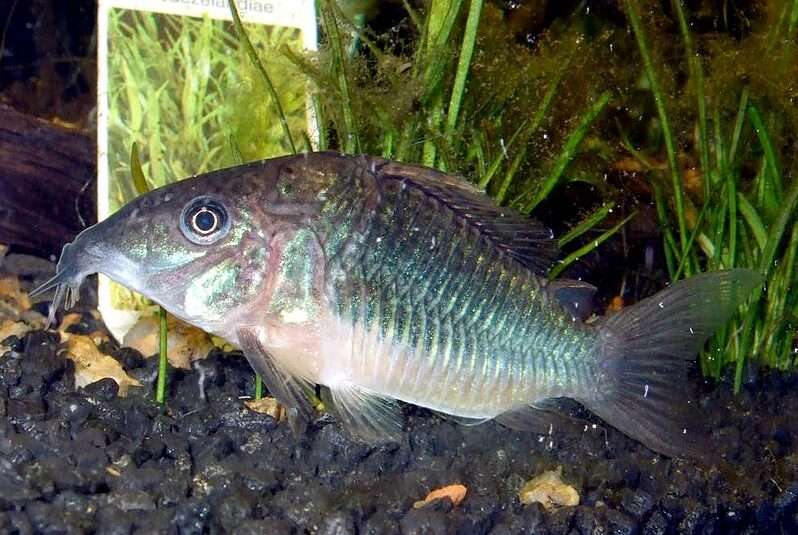
Size
Its length will increase to 7.5 cm (3 in).
Physical Characteristics and Behavior
The back of the hefty body is arched. There are two bony plates on each fish side. There are 21–23 plates in the upper and lower. Barbels on the upper jaw are paired. The bottom plates’ upper and lower halves share the same color. The top row of plates varies in color from shiny green to blue depending on the light. Bronze-to-tan fins. She occasionally gets confused with C. aeneus, despite the differences being obvious. B. splendens is more deep, pointier, and green.
Keeping as Pet

- Aquarium
10 gallons or a 20″ (50 cm) aquarium (38 L). Because this fish burrows, use a fine gravel bottom. The tank should have lush vegetation and be softly illuminated. Rocks, roots, and timber can be used to create hiding spots. The best tanks are shallow ones.
- Social interaction
A calm, undemanding fish that is perfect for new aquarists and communal tanks. Keep the Emerald catfish in schools of three or more fish because it likes to shoal. Keep away from fish that are aggressive or significantly larger, like large cichlids.
Livebearers, Gouramis, Barbs, Danios, Killifish, Discus, and smaller tetras
- Food
Consists of white worms, brine shrimp, insect larvae, aquatic insects, tablets, and flakes.
- Recommended tank mates
The females are more massive, plumper, and subdued in color.
- Water Conditions
It needs a tropical climate, water that is between 5.8 and 8.0 in pH, with a hardness range of 2 to 30 dGH and temperatures between 22 and 28 °C (72 and 82 °F). Insect larvae, benthic crustaceans, and worms make up the majority of its food.
Table





